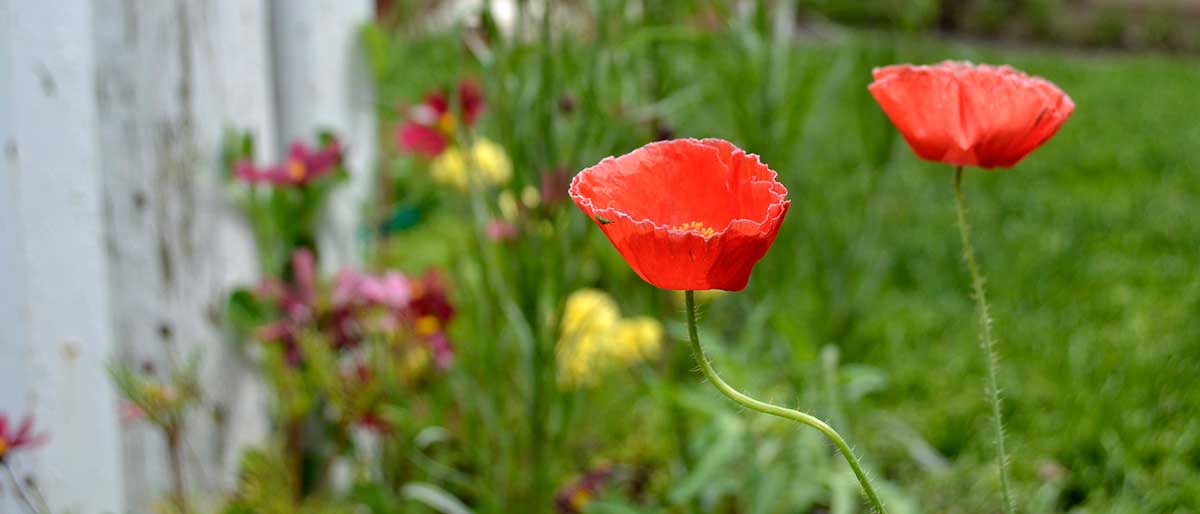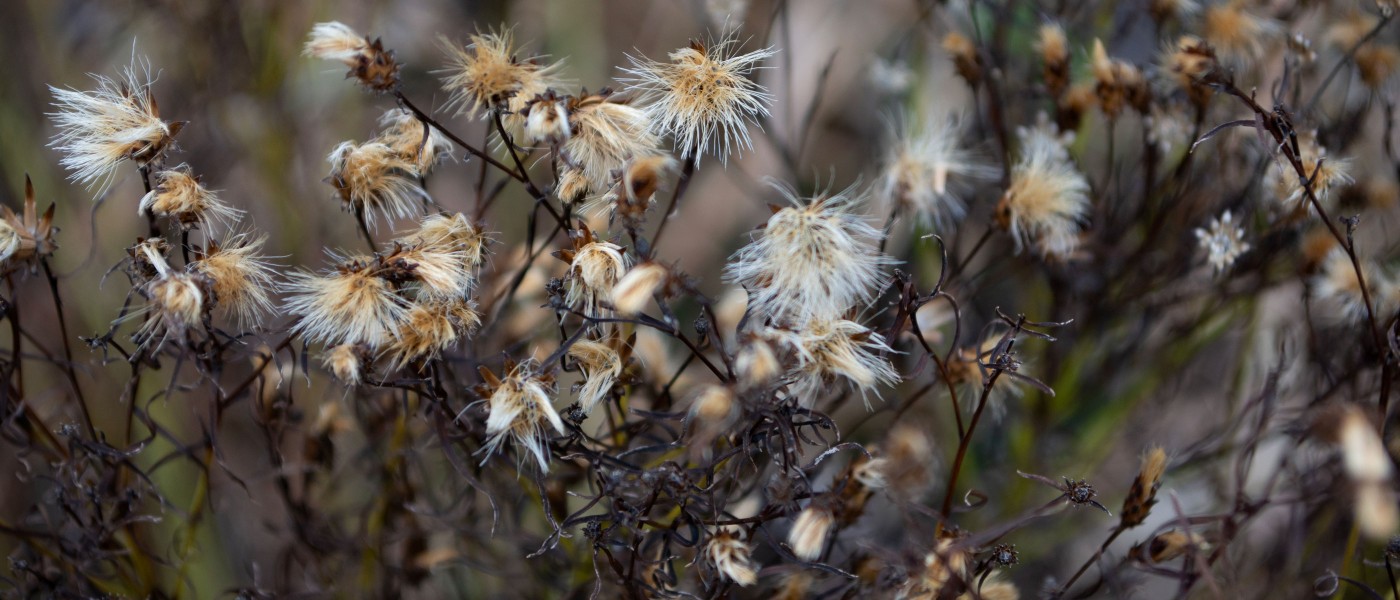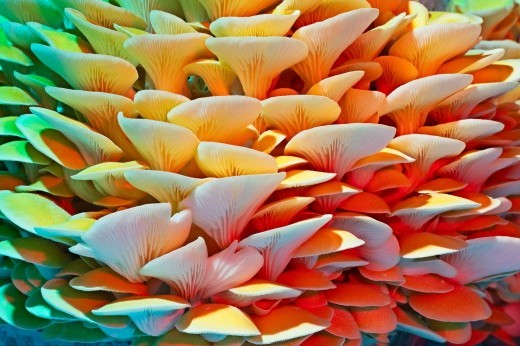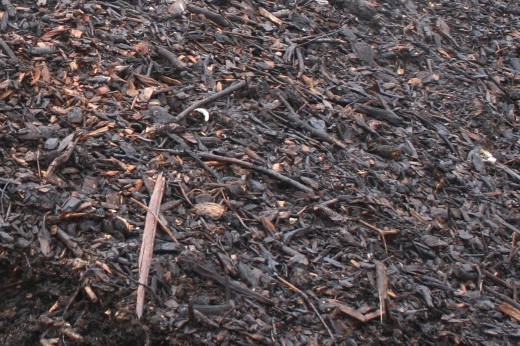“I can't dig in my garden,” writes Camille T. Dungy in Soil: The Story of a Black Mother’s Garden, “without digging up all this old dirt.”
In Soil, the award-winning poet, author, and University Distinguished Professor at Colorado State University documents a years-long effort to transform her thirsty suburban lawn into a diverse native landscape.

Past, present, and future mingle in Dungy's garden. Gardening is more than an escape; it’s a space where, as Dungy writes of Harlem Renaissance poet Anne Spencer’s garden, life’s “many threads” can be integrated. As Dungy and her family plant seeds in their majority-white Fort Collins, Colorado community, the story unspools into a wide-ranging exploration of race, motherhood, the pandemic, Black history, the American West, the environmental canon, and the climate and biodiversity crises.
In her garden and this book, Dungy begins to build something new, filled with caretaking, community, and respect for human and nonhuman life. We spoke in early November about her prairie project, re-contextualizing environmental storytelling, and gardening as a vessel for change.
At the beginning of the book, you write: “Every politically engaged person should have a garden.” You bring in Anne Spencer's garden, which was a hub of civil rights activism. What is the relationship between gardening and political engagement?
Well, for one thing, a garden is a resource that can be materially useful if you grow your own food. But it's also a resource in terms of being a place to see beauty, and see hope and potential and revitalization and growth and development.
Gardens move at their own pace, and they don't always do exactly what you expect them to do when you expect them to do it. That's a really nice lesson to have, right there in front of me, as a person who's thinking in a political way. Politics are slow and often don’t move in the directions that I might expect. So to see that good things can come out of those surprises can be really useful. It's a space where I can recharge and learn about the way change works.

Right now, I think most people who are politically engaged in some way really ought to be also environmentally minded, because so many of the things on the table are directly related to air and water, and food and resources and access. So I have this not particularly giant plot of land where I am supporting local pollinators, and I am supporting bird populations, and I am doing something literally in my own backyard—and that gives me a sense of accomplishment and participation that then emboldens me and strengthens me to move further.
And I'm fully aware that not everybody has access to actual land. In the book I say, “whether a plot in the yard, or plots in the window,” and I speak about community gardens. I think there's all kinds of ways to participate in the act of growing that don't require you to be landed gentry.
In the book, you write about this frustrating legacy in environmental writing—that it’s predominately white, and it’s decontextualized, there’s nobody there. You question the idea that "nature" is best contemplated alone. When did you start to feel that disconnect?
That’s such a great question. I feel like I must have always felt that disconnect. Because I never really understood myself as an environmental writer, until I understood that I just wasn't one of those writers who had been held up as a model of an environmental writer.
And once I started thinking about that, I also thought about who else was absented from this tradition, and why. And how frequently the reasons seem to be that they were writing within a human context, which then disqualified them from being environmental writers.
Lucille Clifton, for example, wrote as much about race and womanhood as she did about ocean waves, mulberry fields, and foxes. In fact, her poems about those subjects are also entirely about race and gender and social standing. And so those poems were most often considered within the context of social or cultural critiques, not environmental observations.
Or Yusef Komunyakaa. My goodness. Whole sections of his first four books are environmental treatises, but they are also about the Vietnam War, or life in the segregated south, and so that work also didn't show up in the nature cannon I was first introduced to. And I know plenty of Black people who read Alice Walker's novels as environmentally engaged literature, but again, I didn't see her books on those lists very often.
I would say that I started to feel that disconnect around the time of pulling together the anthology Black Nature: Four Centuries of African-American Nature Poetry, which was published at the end of 2009. So we're going on 15 years now of thinking about this, but the relevance of the question seems to just keep growing and growing, and the need to resist that limiting categorization feels more and more pressing to me, every year, every month.
As a poet, you clearly experience a lot of joy in knowing the names of plants and trees. And you also recognize the violent colonial histories behind the naming or renaming of things. Many plants and animals are named after white European men. For example, you write that English botanist Thomas Nuttall, after whom many species were named, “walked the interior digging up plants with the butt of his gun,” which I thought was a memorable image.
Do you still grapple with questions around plant names and what to call the plants that you love?
I do! I just was at a seed swap yesterday that a few local native plant organizations put on at our municipal garden, and it was very cool to be surrounded by all these other people who care about this question.

I really have this soft spot in my heart for Thomas Nuttall, because he didn’t know what he was doing, and he didn’t know why he was doing it. The conversations he didn't have, with the people he probably should have had them with, was largely a result of time and space. I don't condemn him in the same way that I might some of his compatriots who took some extra steps of brutal and dismissive behavior that the record does not show Nuttall having taken.
But then, I mean, that's a huge, huge percentage of the plants and some of the animals in North America that bear this one guy's name. At the seed swap, I was walking along and found a plant I didn't know, and it was also a nuttallii—I was like, there's Thomas! Again, on this plant, all over the place. Some common names, too, were part of an agenda to trivialize and demonize and limit the power and potential and connection that people have had with these plants.
The American Ornithological Society just announced that they are going to change 70-80 bird names named after people, which is huge, right? That’s a really exciting thing. And I wonder if plant names can begin to be part of the conversation. Which will just make botany that much harder—but isn’t that the thing with language, or with any kind of change? You just have to do it. And then eventually, no one will know anything different.
Your experience parenting your daughter is an important part of this book. We see her confronting the pandemic, racial terror and violence, and wildfire smoke in the garden. And we also see her building a watering station for bees and taking an active role in the landscape. How does gardening frame the way you parent in a time of crisis?
I think going back to that sense of truly feeling less helpless, and less hopeless, because I am actively participating in some small effort to make a safer planet—that helps me feel like I can look at her and not feel so guilty about bringing her into such a catastrophic situation.
And I know a little individual suburban American garden is not going to reverse the situation with the ice shelves in Greenland. But I also know that a lot of people doing that, and a lot of people then demanding municipal change and statewide change and federal change and corporate change, does make a difference, right? I would rather be part of that body moving towards good. And I get this side bonus of really lovely flowers.

It seems like gardening is in a moment of sea change, where approaches grounded in ecological care are increasingly mainstream. Do you feel alone in your efforts to support biodiversity, or do you see that happening in the gardens of your friends and neighbors?
It's 10 years now that I've been doing this project, and I feel significantly less alone. Year by year, remarkably so. When I first began this, I was definitely the only house around that had anything like what I'm talking about in a visible part of the yard. And now it's almost like a reverse, there are far fewer yards that look like just solid lawn with no other attention to native plants or low-water kinds of planting decisions, going all the way to a big native-intensive pollinator garden.
And so that's been really cool, to see more and more people understanding the need for this, the desire for it. I think that there is definitely a momentum. Part of what happened, though, with that process, is that my yard looked different than the other yards around it. And that can be really scary to be the first person to step out and say, I'm gonna make my space look different.
Planting a native yard takes longer. It takes longer to establish than a more conventional-looking American suburban yard. And so there can be really almost three years where your yard is the scraggly-looking yard on the block. That can be very hard for people, and it can be impossible, actually, depending on your HOA (Homeowner’s Association). There are some HOAs that would not allow it to happen at all. You could get a lien on your house, really serious consequences.
My book is concerned with the intersection of my happening to be a Black woman in a primarily white place making this decision. I'm like, well, we look different anyway. We live in this block differently than other people anyway. And so I might as well just keep going all the way with that difference and make the outside of the house look as different as the inside does. And for some people, that would be really scary because like, oh, I stand out already so much. I don't want to draw this other attention.
You wrote that in May of 2020, you joined some online groups dedicated to Black gardeners. Can you talk a bit about what struck you in those conversations?
There was a lot of nervousness around doing things wrong, about not knowing about things and so killing them or hurting them or planting the wrong thing in the wrong place. And that nervousness, I think, is often directly correlated with having lived through systemic oppression where, if you make a mistake, your future, your life, your children's future, could be over, right?
These are not small consequences for walking on the wrong side of the road or looking at somebody the wrong way. Black people have a legacy of terror connected to making decisions that are perceived as wrong or manipulated to look as if they're wrong.
That feels like this huge leap that I'm taking—like, taking a plant in a yard and connecting it to the story of Emmett Till—but I think that what happens with generations of systemic violence and oppression is that those kinds of alerts and alarms are just there all the time. And so risk-taking can be really scary. Particularly risk-taking in a thing that's supposed to be relaxing, right? So all these what-ifs, I think, can unconsciously stop people.
When did you start to feel like you could call yourself a gardener?
When we bought this house, I wanted to transform the yard, so I think it may have been what connected me to this space. But I think feeling really confident in it was just a matter of doing. And writing the book helped me articulate some of the thoughts that I had been feeling or living through.
It wasn’t until I thought about the fact that I was too afraid to pick up more than one of the pecans from John Muir’s orchard, for example—in comparison to my friend, who grabbed a handful—that I fully understood how much I, too, have that sense of, someone’s watching me all the time, even when someone’s not. That helped me circle back to understanding what was happening on those message boards.
How is the prairie project doing?
The prairie project is amazing right now. It is a wild jungle, because we had a record amount of rain this year, more rain in a four-month period than we’ve had for 130 years. And so that's great, because it was the third year of the garden being in and it just exploded, which was very cool.

Because of all the rain, there were a lot of mosquitoes, and because of all the things that were blooming and growing, there were a ton of pollinators, many of the stinging and biting kinds as well! So I wasn’t able to get into the prairie project to do a lot of the pruning that I might have done, that part of me that wants things to look “right” and neat.
So it was happy and wild, and really truly looked like an exuberant prairie by the end of the growing season. It was exciting to see how it exploded, and then how the circumstances of the weather and the environment and the animals that were welcome there kept me from meddling too much, and really allowed it to do its thing.




